Ideas futurists who came true
Hello! In one of the previous posts on the blog LANIT, we looked at the ideas of gadgets and technologies that were invented by science fiction of the past and have not yet been reflected in the present. But predictions always have two options for development - they either come true or not. Therefore, today, at the beginning of the New Year 2019, we will talk about those devices and technologies that first appeared to the world in the pages of science fiction, and a few decades later became a reality. Under the cut - the predictions of Ray Bradbury, Arthur Clark, Ray Kurzweil, Stanislav Lem and other well-deserved science fiction writers.
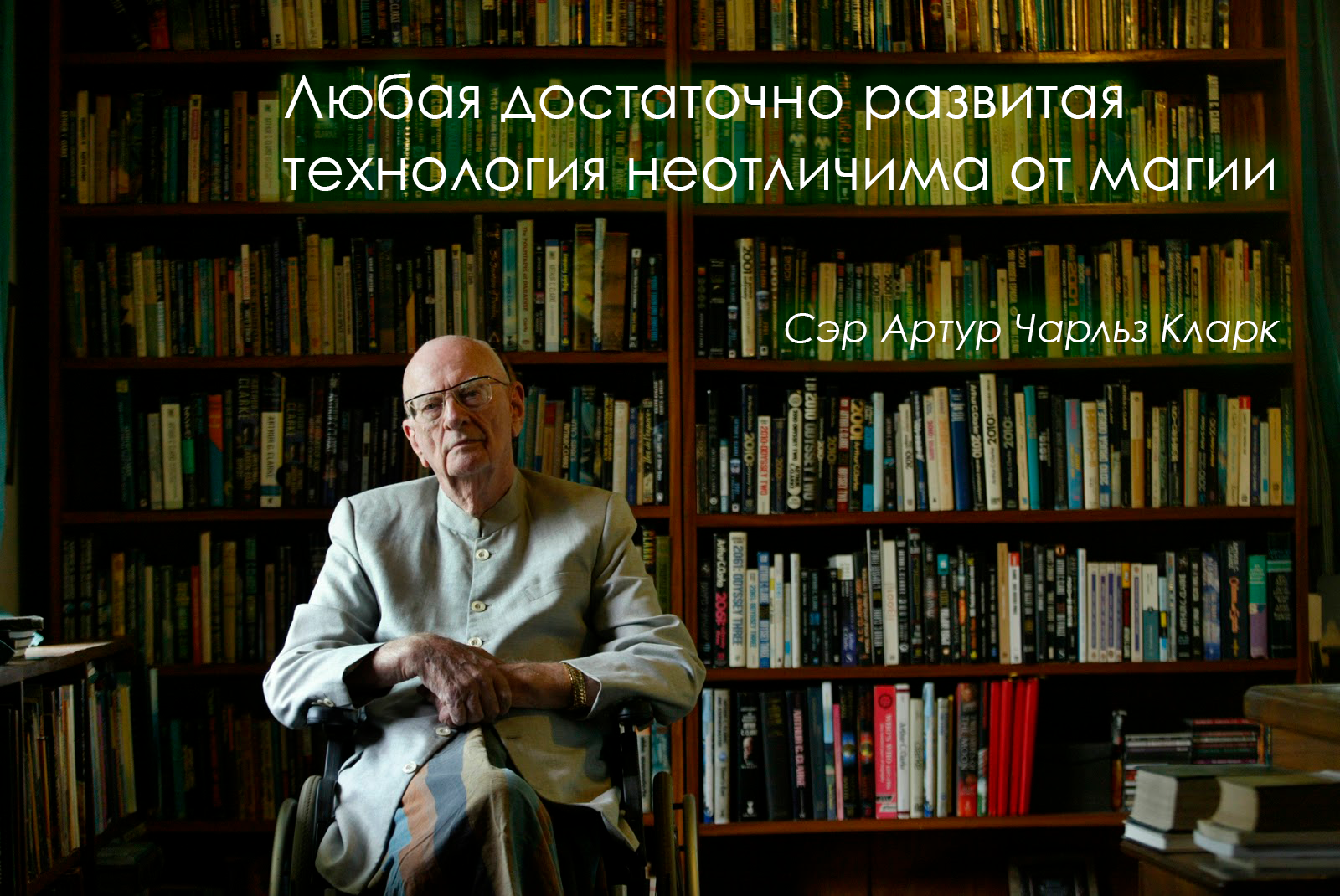
This is the most extensive field for fantasy, technology and interstellar battles. The inviting unknownness of the Universe prompted science fiction writers to describe technologies that were supposed to make a person’s stay in space safe and comfortable: from wonderful space suits and the space ships themselves to communications satellites and energy sources.
The satellites, by the way, were described by Arthur Clark in 1945. In the magazine “Wireless World” he published a scientific article on the whole system of interacting communication satellites in geostationary orbits.
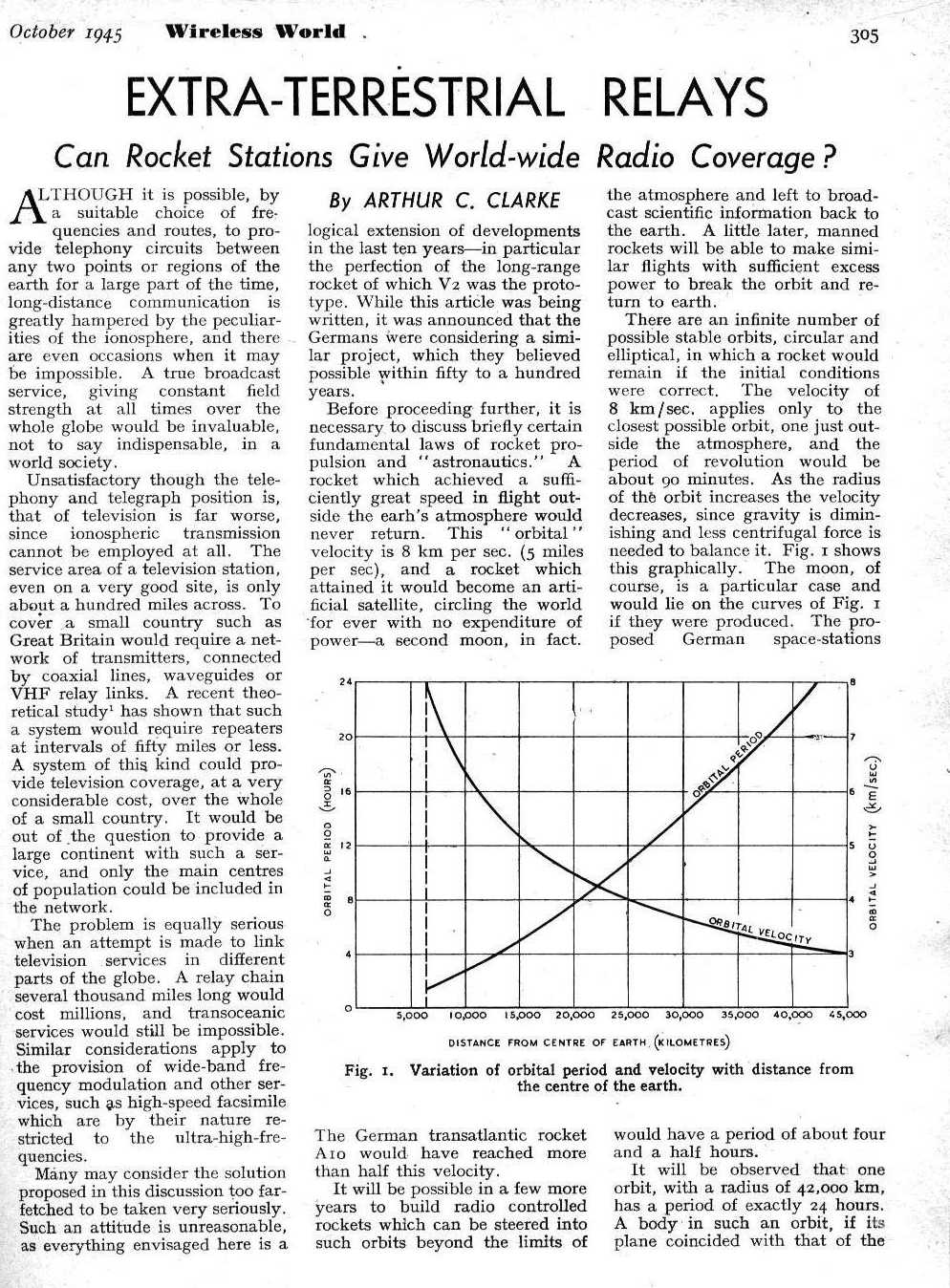
And at the end of the summer of 1964, NASA launched the satellite Syncom-3 into geostationary orbit .
West noted the merits of the writer, calling the region of outer space at a distance of 36,000 km above sea level in the plane of the earth's equator "Clark Belt", and the geostationary orbits themselves are also often called "Clark Orbits."
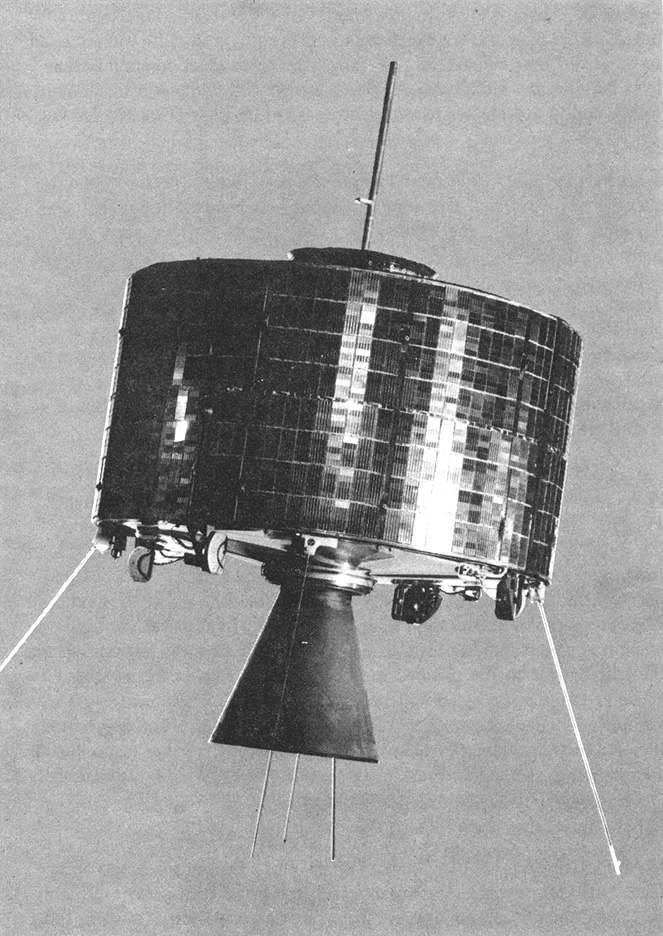 The first-generation Syncom
The first-generation Syncom
satellite In addition to satellites, in 1947 he wrote the novel Prelude to Space, where he spoke about the landing on the moon. He predicted that this event took place in 1978. In reality, Aldrin and Armstrong set foot on the surface of the moon on July 21, 1969. It is a pity that with the colonization of Mars we still do not particularly justify the hopes of science fiction.
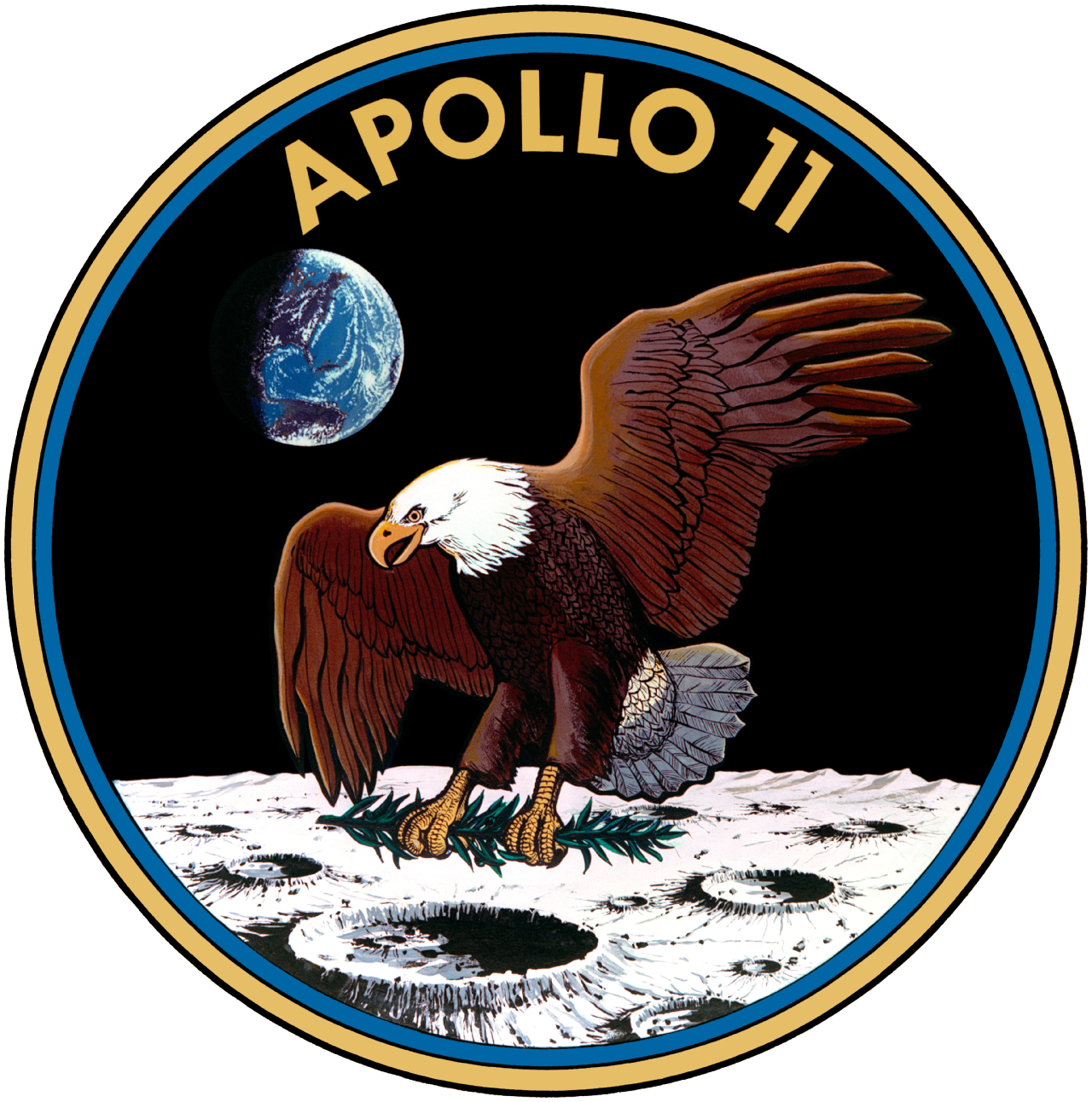 NASA Apollo 11 Program
NASA Apollo 11 Program
The weapon of the future in the writings of science fiction has tremendous power, capable of not only surpassing all modern weapons at the time of writing, but also destroy entire planets. Usually this weapon is energetic: from pocket blasters to the Death Star.
Lasers fiction dreamed for a long time and steadily - what could be more spectacular than a thin beam of light escaping from a blaster and destroying everything in its path?
In reality, experts from the military-industrial complex lasers are used for the most part for targeting, but there are also existing models of weapons.
 US Navy Laser Cannon
US Navy Laser Cannon
Where more frequent use of lasers in combat is still a non-lethal effect (for now), see Dazzler . For example, blinding the enemy. Direct beams of green or red lasers, caught in the eyes of a representative of the opposing side, or, for example, into optical observation devices, cause temporary visual impairment. That is, the enemy for some time loses its combat capability and the ability to take part in hostilities (even visual observation is no longer available).
The guys from the US Department of Defense even made a prototype of a laser acoustic gun capable of stunning an enemy several tens of kilometers away.
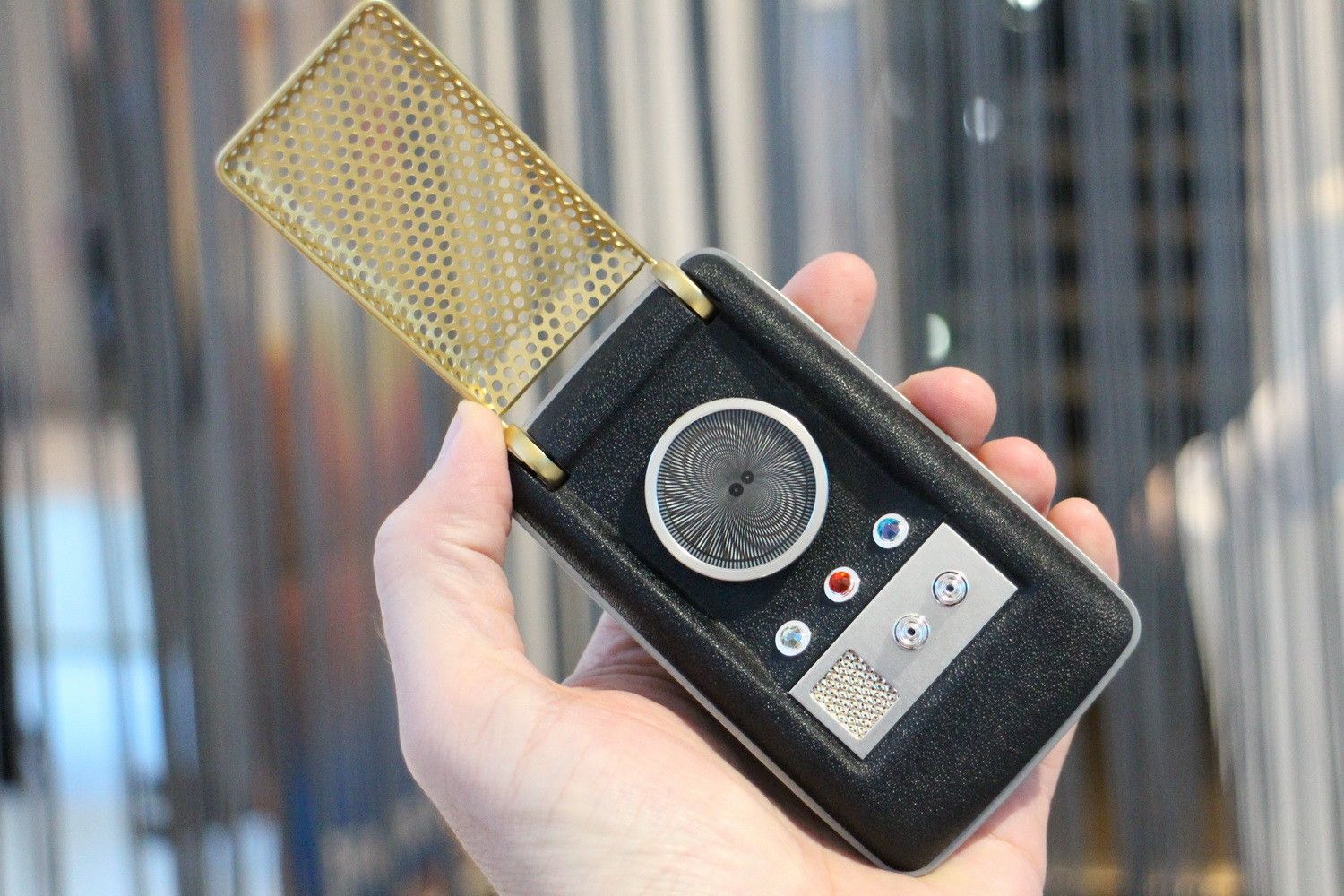 Such a device appears in Star Trek back in 1964.
Such a device appears in Star Trek back in 1964.
Of course, Leonid Kupriyanovich did something similar in 1957 (an experimental prototype of the LC-1, which was de facto mobile, but weighed 3 kg). So the communicator from Star Trek can be considered a device closer to modern smartphones. In the end, this is a "clamshell".
Of course, this communicator, as conceived by the creators of the series, allowed the use of subspace communication. With this is not very. In a number of cities in the Moscow region and with 4G, not everything is as smooth as we would like.
And Motorola DynaTAC 8000X became the first mobile phone to receive a certificate from the Federal Communications Commission . The size was also far from the dimensions of the serial communicator.
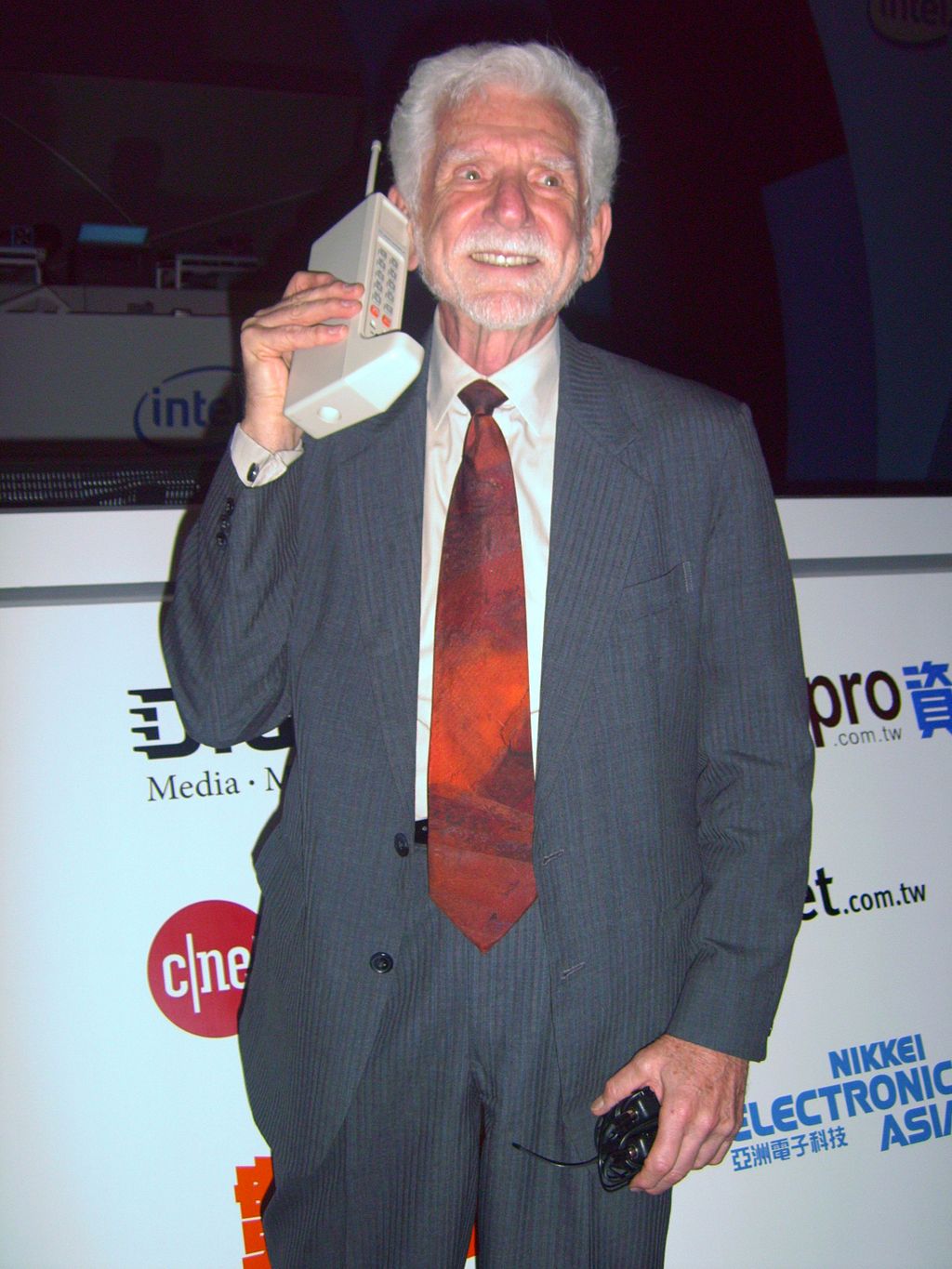 Pictured : Dr. Martin Cooper : Wikipedia
Pictured : Dr. Martin Cooper : Wikipedia
Start here is not so much a fantasy, but with a genius and innovator - Nikola Tesla.
He created a radio-controlled boat and presented it to the public in 1898 in Madison Square Park. The boat fully obeyed the orders of the scientist. It is good that by that time the Inquisition ceased active activity, otherwise a couple of strange questions would arise to Nicholas and his miracle boat.
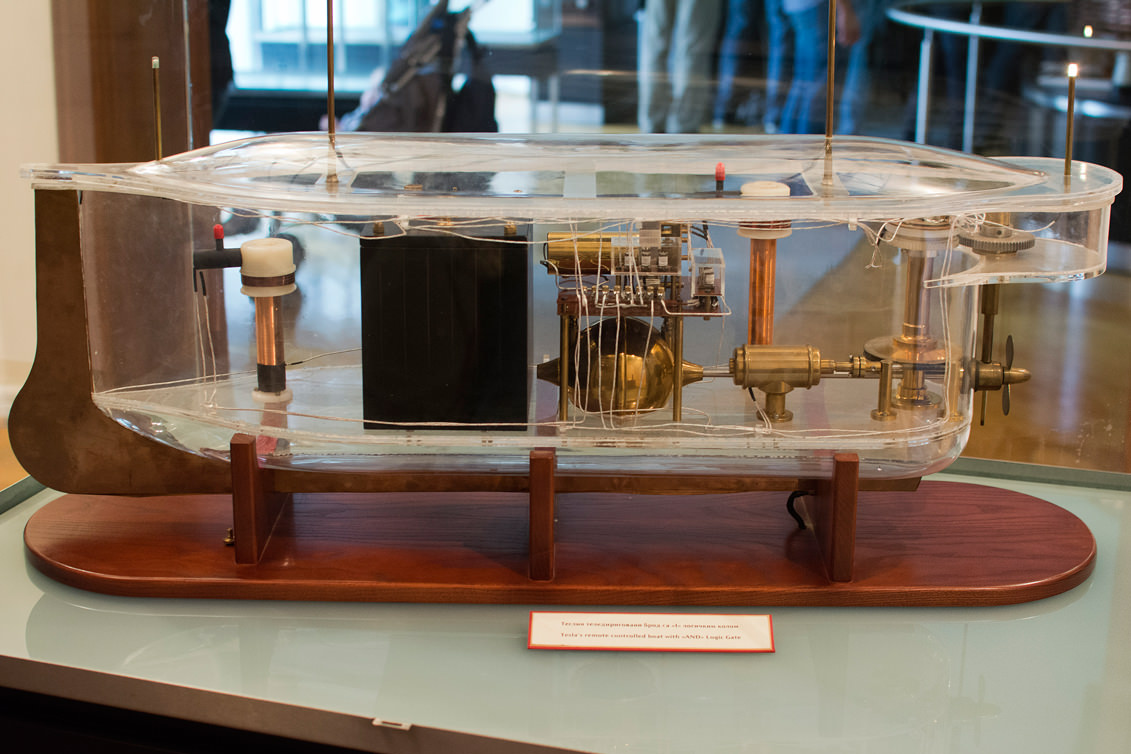 Photo: mirf.ru
Photo: mirf.ru
On November 8, 1898, Nikola registered a patent # 613,809 for a remote control device using radio signals.
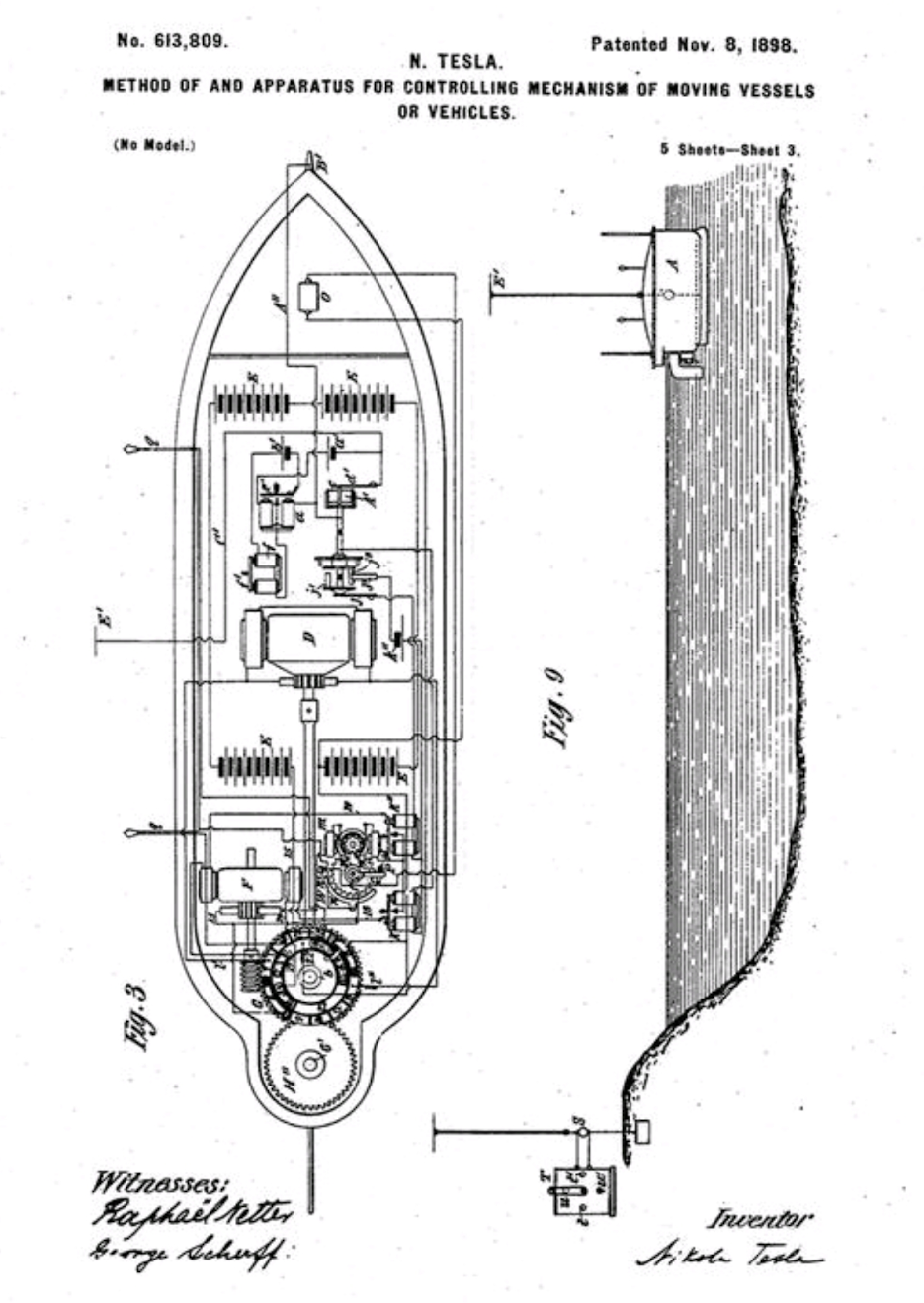
In addition, it is worth remembering the analogues of the unmanned battles described in the “Game of Ender” (Orson Scott Card) in 1977.
The future that Orson wrote about is 2135.

However, now we see that full-fledged combat operations with drones can be conducted now. A UAV is not a weak camera drone for a long time, capable of reconnaissance; it’s quite a deadly machine, capable of carrying both firearms and highly destructive missiles.
The control of these drones, at first glance, is not so different from a computer simulator - a person, screens and a joystick.
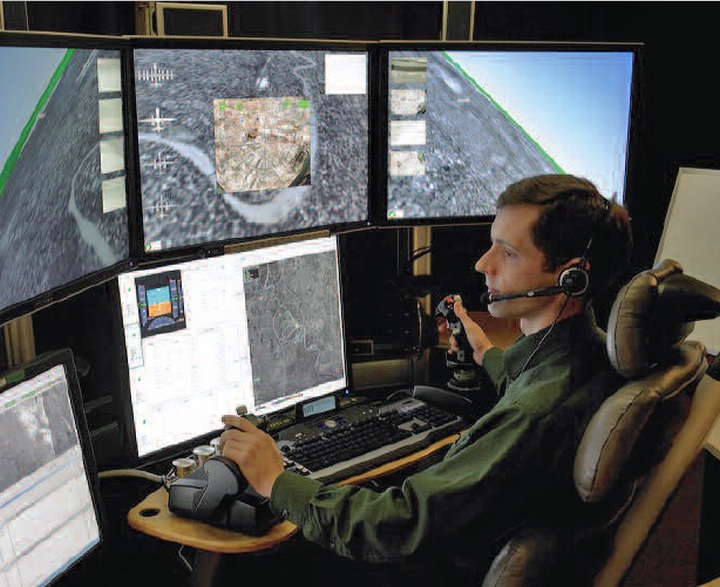 UAV operator and Raytheon control system .
UAV operator and Raytheon control system .
In general, in terms of drones, we are already clearly ahead of the forecasts of science fiction. I wanted to carry out hidden intelligence - please. It is necessary to destroy a single goal - easily (here you can remember the “Bourne Evolution” with Jeremy Renner in the lead role. The drone did not master the spoiler). It is necessary to erase a couple of villages from the map with the help of one or two rockets - and this is possible.
Fantasts of different times and countries used genetic engineering for different purposes. Healing diseases and saving humanity from global problems, new plants (hello, GMO!), Soldiers with superpowers, mutants, a new stage of prosthetics and growing tissues of the body, etc.
From the amphibian man Belyaev to Lizard from the Marvel universe, from people who grow as ready-made organ transplant kits for celebrities ( “The Island” ), up to Steve Rogers . Where reality did not help, fantasy helped - writers and creators of comics invented unique serums, mysterious laboratories.
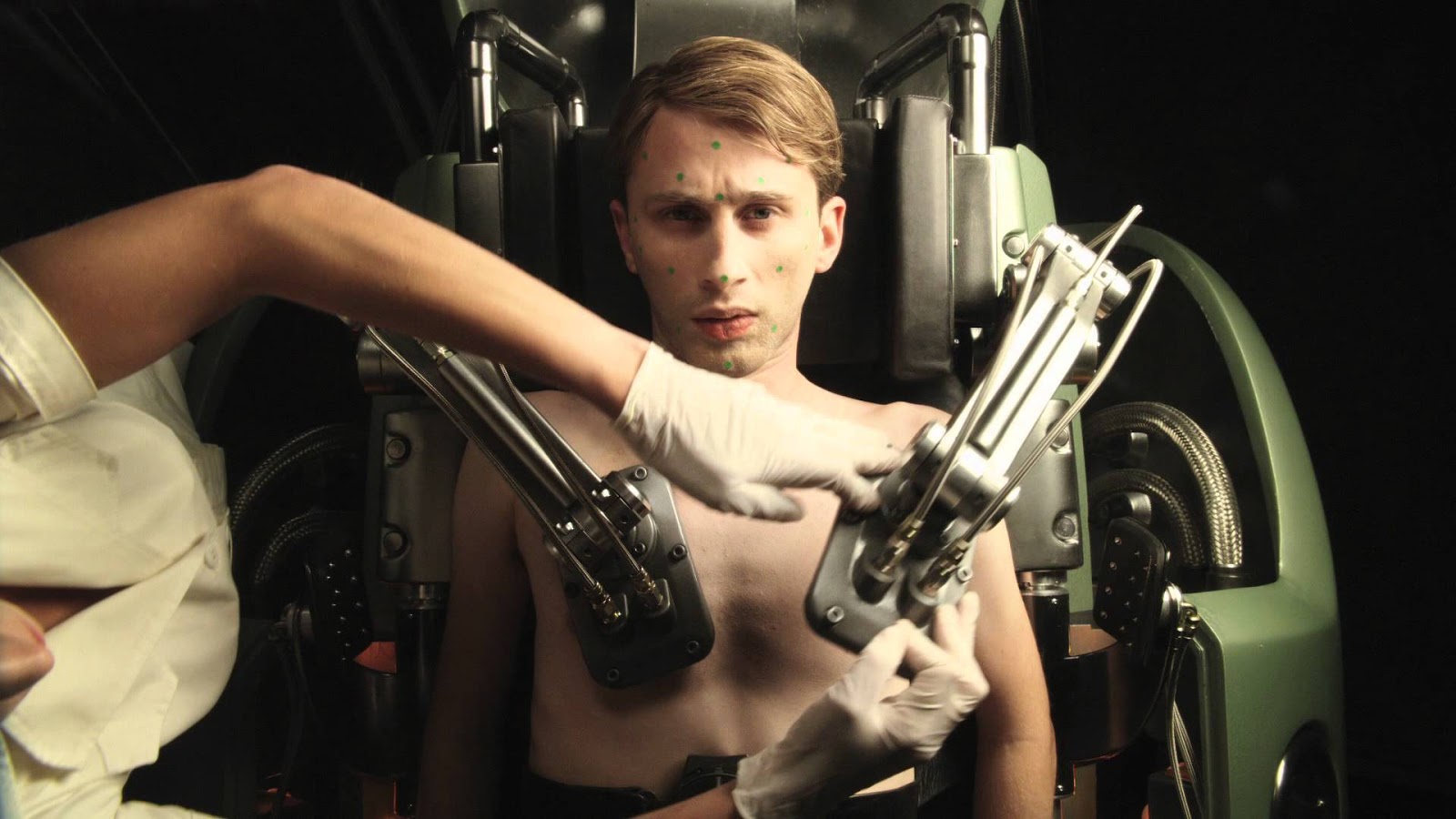 Steve Rogers, the version of "Before", a frame from the movie Captain America: The First Avenger.
Steve Rogers, the version of "Before", a frame from the movie Captain America: The First Avenger.
Even Huxley in the novel "On the Brave New World" (1932) talked about special hatcheries where they grew people with predetermined characteristics and mental abilities in order to send them immediately each caste for a certain type of work - Alpha occupied senior positions, and Epsilons joined the ranks of laborers.
By the way, Aldous described in this novel also the cult of entertainment and a serious glut of information. Apparently, it also came true. Today, our problem is not to get this or that information, but to find a needle of truthful information in a stack of implausible (but actively discussed) news.
Now scientists are making obvious progress in growing fabrics for the treatment of damage. News that a certain organ or part of the body could be printed on a 3D printer gradually ceases to amaze and becomes the norm. And to grow the right organ from a test tube is no longer a fantasy. So far, the situation is such that the achievement of a medical miracle is not so much a question of technology as a question of having a budget for this very miracle.
Thanks to CRISPR-Cas9, you can edit fragments of genomes. And it also ceased to be fiction. This is already a familiar job for professionals.
Where without "1984" Orwell, which was released in 1949. Telecranes installed in the house of every citizen, as well as on the streets, simultaneously followed people, and were the mouthpiece of non-stop propaganda (we can meet the same in one of the Black Mirror series and in Equilibrium ).

Now there are cameras almost everywhere - from subway cars and supermarket premises to streets (external surveillance, ATM cameras, etc.). Surely George did not think that his book would be so often remembered in our time precisely from a political point of view.
In many ways, the authors of science fiction novels and screenwriters of TV series were ahead of their time, but in some ways modern science still managed to catch up with them, and even overtake them.
If you had the chance to create only one invention from your favorite books, what would it be?

Space
This is the most extensive field for fantasy, technology and interstellar battles. The inviting unknownness of the Universe prompted science fiction writers to describe technologies that were supposed to make a person’s stay in space safe and comfortable: from wonderful space suits and the space ships themselves to communications satellites and energy sources.
The satellites, by the way, were described by Arthur Clark in 1945. In the magazine “Wireless World” he published a scientific article on the whole system of interacting communication satellites in geostationary orbits.

And at the end of the summer of 1964, NASA launched the satellite Syncom-3 into geostationary orbit .
West noted the merits of the writer, calling the region of outer space at a distance of 36,000 km above sea level in the plane of the earth's equator "Clark Belt", and the geostationary orbits themselves are also often called "Clark Orbits."

satellite In addition to satellites, in 1947 he wrote the novel Prelude to Space, where he spoke about the landing on the moon. He predicted that this event took place in 1978. In reality, Aldrin and Armstrong set foot on the surface of the moon on July 21, 1969. It is a pity that with the colonization of Mars we still do not particularly justify the hopes of science fiction.

Military-industrial complex
The weapon of the future in the writings of science fiction has tremendous power, capable of not only surpassing all modern weapons at the time of writing, but also destroy entire planets. Usually this weapon is energetic: from pocket blasters to the Death Star.
Lasers fiction dreamed for a long time and steadily - what could be more spectacular than a thin beam of light escaping from a blaster and destroying everything in its path?
In reality, experts from the military-industrial complex lasers are used for the most part for targeting, but there are also existing models of weapons.

Where more frequent use of lasers in combat is still a non-lethal effect (for now), see Dazzler . For example, blinding the enemy. Direct beams of green or red lasers, caught in the eyes of a representative of the opposing side, or, for example, into optical observation devices, cause temporary visual impairment. That is, the enemy for some time loses its combat capability and the ability to take part in hostilities (even visual observation is no longer available).
The guys from the US Department of Defense even made a prototype of a laser acoustic gun capable of stunning an enemy several tens of kilometers away.
We quote:
The device uses two types of lasers: femtosecond and nanolaser. The first generates pulses forming a plasma ball in the air, while the second “hits” a narrow-range beam. As a result, a bright glow and a loud sound are created at the point to which the lasers are directed.
According to the developers, during the experiments they managed to get a plasma ball at a distance of 30 kilometers. For three years, scientists hope to “teach” the installation to recreate the human voice.
From here
Mobile phones / communicators

Of course, Leonid Kupriyanovich did something similar in 1957 (an experimental prototype of the LC-1, which was de facto mobile, but weighed 3 kg). So the communicator from Star Trek can be considered a device closer to modern smartphones. In the end, this is a "clamshell".
Of course, this communicator, as conceived by the creators of the series, allowed the use of subspace communication. With this is not very. In a number of cities in the Moscow region and with 4G, not everything is as smooth as we would like.
And Motorola DynaTAC 8000X became the first mobile phone to receive a certificate from the Federal Communications Commission . The size was also far from the dimensions of the serial communicator.

Battle drones
Start here is not so much a fantasy, but with a genius and innovator - Nikola Tesla.
He created a radio-controlled boat and presented it to the public in 1898 in Madison Square Park. The boat fully obeyed the orders of the scientist. It is good that by that time the Inquisition ceased active activity, otherwise a couple of strange questions would arise to Nicholas and his miracle boat.

On November 8, 1898, Nikola registered a patent # 613,809 for a remote control device using radio signals.

In addition, it is worth remembering the analogues of the unmanned battles described in the “Game of Ender” (Orson Scott Card) in 1977.
The future that Orson wrote about is 2135.

However, now we see that full-fledged combat operations with drones can be conducted now. A UAV is not a weak camera drone for a long time, capable of reconnaissance; it’s quite a deadly machine, capable of carrying both firearms and highly destructive missiles.
The control of these drones, at first glance, is not so different from a computer simulator - a person, screens and a joystick.

In general, in terms of drones, we are already clearly ahead of the forecasts of science fiction. I wanted to carry out hidden intelligence - please. It is necessary to destroy a single goal - easily (here you can remember the “Bourne Evolution” with Jeremy Renner in the lead role. The drone did not master the spoiler). It is necessary to erase a couple of villages from the map with the help of one or two rockets - and this is possible.
Genetic Engineering
Fantasts of different times and countries used genetic engineering for different purposes. Healing diseases and saving humanity from global problems, new plants (hello, GMO!), Soldiers with superpowers, mutants, a new stage of prosthetics and growing tissues of the body, etc.
From the amphibian man Belyaev to Lizard from the Marvel universe, from people who grow as ready-made organ transplant kits for celebrities ( “The Island” ), up to Steve Rogers . Where reality did not help, fantasy helped - writers and creators of comics invented unique serums, mysterious laboratories.

Even Huxley in the novel "On the Brave New World" (1932) talked about special hatcheries where they grew people with predetermined characteristics and mental abilities in order to send them immediately each caste for a certain type of work - Alpha occupied senior positions, and Epsilons joined the ranks of laborers.
By the way, Aldous described in this novel also the cult of entertainment and a serious glut of information. Apparently, it also came true. Today, our problem is not to get this or that information, but to find a needle of truthful information in a stack of implausible (but actively discussed) news.
Now scientists are making obvious progress in growing fabrics for the treatment of damage. News that a certain organ or part of the body could be printed on a 3D printer gradually ceases to amaze and becomes the norm. And to grow the right organ from a test tube is no longer a fantasy. So far, the situation is such that the achievement of a medical miracle is not so much a question of technology as a question of having a budget for this very miracle.
Thanks to CRISPR-Cas9, you can edit fragments of genomes. And it also ceased to be fiction. This is already a familiar job for professionals.
Continuous monitoring
Where without "1984" Orwell, which was released in 1949. Telecranes installed in the house of every citizen, as well as on the streets, simultaneously followed people, and were the mouthpiece of non-stop propaganda (we can meet the same in one of the Black Mirror series and in Equilibrium ).

Now there are cameras almost everywhere - from subway cars and supermarket premises to streets (external surveillance, ATM cameras, etc.). Surely George did not think that his book would be so often remembered in our time precisely from a political point of view.
In many ways, the authors of science fiction novels and screenwriters of TV series were ahead of their time, but in some ways modern science still managed to catch up with them, and even overtake them.
If you had the chance to create only one invention from your favorite books, what would it be?
